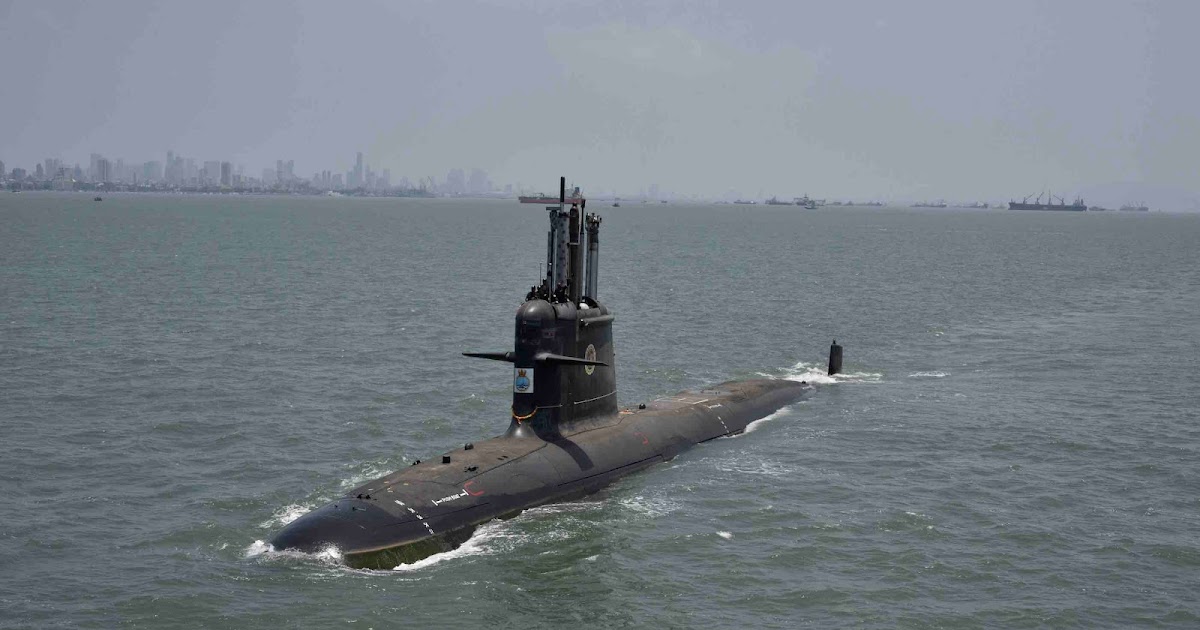
INS Vaghsheer, one of six Scorpene submarines built by MDL under Project 75
By Vikas Gupta
Defence News of India, 8 Jun 23
German shipbuilder Thyssenkruppe Marine Systems (TKMS) on Wednesday signed an agreement with India’s premier defense shipyard Mazagon Dock Limited (MDL) to cooperate in building six state-of-the-art submarines for the Indian Navy.
The submarines, powered by Air Independent Propulsion (AIP), are set to be built under a Rs 45,000 crore program called Project 75-I under the “strategic partner” acquisition category ( SP). This requires qualified Indian companies to build an armament platform in partnership with a foreign original equipment manufacturer (OEM) chosen by the Ministry of Defence.
While conventional diesel-electric submarines can operate silently underwater for up to 48 hours, AIP-piloted submarines remain underwater for up to two weeks before duty surface for battery charging.
This gives AIP-piloted submarines significant operational advantages over older diesel-electric submarines that are easily detected by enemy radar, which spots masts or snorkels sticking out of the water when they surface.
None of today’s AIP power plants are ideal; each has its merits and drawbacks. In addition, each navy operates in different geographies and hydrological conditions and has varying levels of crew training and conditions at naval bases.
Experience has shown, however, that there are only two types of practicable AIP systems: “fuel cell AIP” and “Stirling AIP”. Another fuel cell AIP – the closed cycle steam turbine “Autonomous Underwater Energy Module (MESMA) – showed its practicality but remained a niche product.
AIP fuel cell
Fuel cell-based AIP generates power by reverse electrolysis of oxygen and hydrogen. In this process, the two elements chemically combine, generating electricity to charge the submarine’s batteries.
This process does not need air, but requires the storage of highly flammable hydrogen on board.
The fuel cell AIP systems are associated with the German Class 212A and Class 214 submarines, and will also power the Project 75-I submarines.
Other AIPs for fuel cells are under development in other countries, such as Russia (alkaline fuel cells) and India (phosphoric acid fuel cells).
German designers have developed an AIP system with low noise, low temperature and ordinary water at the output of the process. The system is complex, expensive and cumbersome. The Class 212A submarines are three times larger than the older Class 206 submarines of the German Navy.
Additionally, fuel cell-based AIP systems require meticulous crew training and dedicated infrastructure.
The development of this AIP system took 25 years, but it was supported by concerted European efforts to bring hydrogen energy to all areas, including the automotive industry.
A key problem in the development of fuel cells was to control the storage of hydrogen. The hydrogen metal hydride storage used in the 212A and 214 class submarines provides high security, but also a heavy storage system and, therefore, an unacceptably large submarine.
This was acceptable to the German Navy, which designed its submarines for operations in the Baltic Sea and the North Sea. Class 212 submerged enduranceAT the submarine is sufficient for these theaters and remained the same when the Italian Navy joined the 212A program since German and Italian submarines operate in areas controlled by Allied surface and air forces.
The navies that have purchased Class 214 submarines – Portugal, Greece and Turkey – are building on already designed hydrogen infrastructure, which they are further developing after joining users of the class submarine. 214.
In South Asia, the situation is quite different. The need is for a submarine with a submerged endurance of more than two weeks, while the deployment of expensive hydrogen infrastructure remains and could take decades.
Stirling
The second type of AIP, based on the Stirling engine, is the first modern combat-ready system. It is a simple system that uses diesel fuel (typical for submarine) and liquid oxygen, discharging the plant overboard at small and medium depths.
Low-powered Stirling engines are much quieter than the main diesel generators in submarines, offering considerable tactical gains. It took less than 15 years to create this system, from concept to implementation.
Although this system lacks stealth, it has proven to be relatively good in a small area, shallow depths, complex hydrology and heavy traffic, which require minimizing the acoustic signature of a submarine. The Stirling engine is compact enough for small submarines, making it ideal for countries like Sweden and Singapore, as the conditions around the Strait of Malacca are similar to those in the Baltic Sea.
During this time, Japanese designers have significantly improved the capabilities of the AIP system. Japanese submarines have four-engine AIP systems, instead of two, as is the case with the more compact Swedish submarines. Despite the development of the defense industry in Japan, the Japanese Maritime Self-Defense Force preferred to license the existing system, developed by Sweden for different conditions, instead of developing the indigenous system.
India’s AIP system
The Defense R&D Organization (DRDO) AIP system is based on innovative phosphoric acid fuel cell (PAFC) technology.
This PAFC process is more robust, tolerant of fuel impurities, offers longer life and efficiency, and is much safer, as it generates hydrogen on board, rather than requiring the storage of hazardous hydrogen. .
After testing its AIP on a land-based prototype in March 2021, DRDO now needs to turn it into a “marinized” AIP system, which can fit into a real submarine and operate underwater in real-world conditions.






